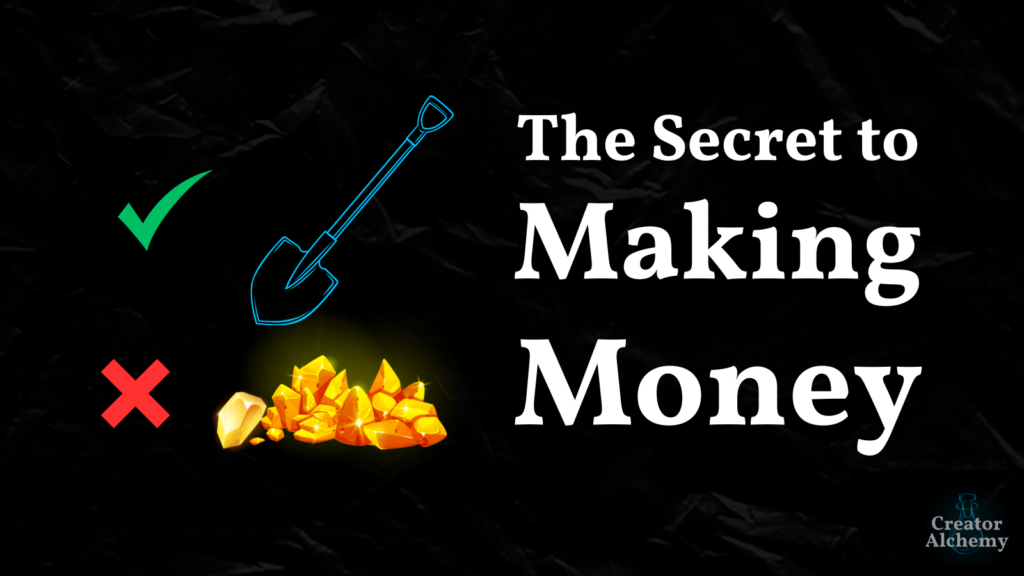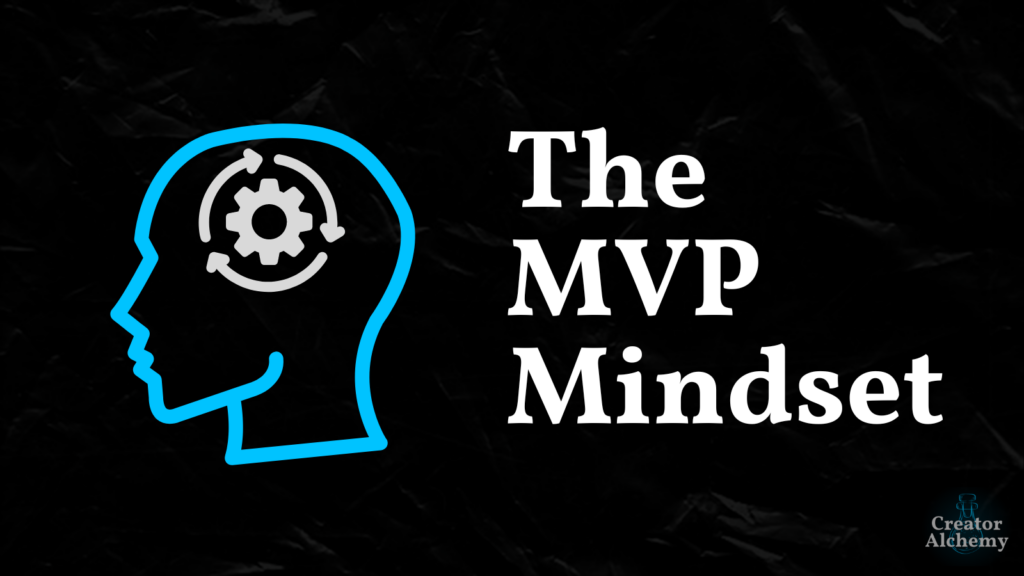What if I told you there was an invisible fabric of reality all around you that most people don’t know exists, but that you can train your mind to see? You’d probably think I smoked something illegal (and really strong).
And what if I told you that, by training your mind to see it, you’d be able to create content effortlessly? You’d probably think I’d smoked something so strong I’d started wearing a tinfoil hat.
Well, I haven’t smoked anything and my foil is safely tucked away in my kitchen drawer.
But this invisible fabric does exist.
It’s a psychological concept called the Baader-Meinhoff Phenomenon, and it’s a creator’s secret weapon to create content effortlessly.
And once you learn about it, you’ll see it everywhere.
Today, I’m going to teach you how to leverage it.
Let’s get started…
•••
What is the Baader-Meinhoff Phenomenon?
I once dated a girl who drove a VW Beetle. I’d occasionally seen Beetles before, but after we started dating, I saw them everywhere.
Years later, I dated a different girl who drove a red Jeep and the same thing happened—all of a sudden I saw red Jeeps everywhere I went.
But why?
Was there suddenly a surge of Beetles or Jeeps?
Obviously, no. But my mind was suddenly paying attention to them where, before, it had ignored them.
The number of Beetles and Jeeps was the same, but my perceptual awareness of them had changed.
This is the Baader-Meinhoff Phenomenon in action.
The Baader-Meinhoff Phenomenon is when we come across something for the first time, then our minds start noticing it everywhere.
Our minds are great at two things: Identifying patterns and filtering out 99% of the endless stream of information from our environment.
They’re constantly focusing on certain stimuli and filtering out others. This is critical to our ability to function (and maintain our sanity) because we’re not equipped to consciously process everything in our environment. We’re constantly bombarded by an infinite number of stimuli—sights, sounds, smells, thoughts, etc.
Our minds have to have a way to filter out most of this so we can go about our day-to-day life, while also paying enough attention to identify relevant patterns in our environment to improve our chances of survival (”Oh, last time I saw scratch marks on a tree, a tiger was nearby. This tree has scratch marks on it, so there’s probably a tiger nearby.”)
The Baader-Meinhoff Phenomenon is basically when our minds allow a little more stimuli in that were previously being filtered out, so we can identify patterns most people overlook—aka, see the invisible fabric I referenced earlier.
We just have to learn how to expand our perceptual awareness.
Here’s why learning to do this is so powerful, especially for creators…
•••
Why the Baader-Meinhoff Phenomenon is Powerful
“If you think of a project and just start it, your mind will constantly find patterns and seek resources to align your thoughts and behaviors toward achieving that goal. It’s just how we’re wired.”
— Dan Koe, Digital Economics
Creating content is effortful. Finding interesting ideas and making new connections between them for your audience can be incredibly difficult for many creators.
This is why the Baader-Meinhoff Phenomenon is a creator’s secret weapon.
The Baader-Meinhoff Phenomenon can be boiled down to one phrase:
Whatever you focus on, you’ll find.
- Focus on problems, you’ll find more problems.
- Focus on solutions, you’ll find more solutions.
- Focus on complaining, you’ll find more things to complain about.
- Focus on gratitude, you’ll find more things to be grateful for.
- Focus on obstacles, you’ll find more obstacles.
- Focus on opportunities, you’ll find more opportunities.
This isn’t some “manifest your dream life” bullshit. It’s how you’re brain is wired.
Because the Baader-Meinhoff Phenomenon is a combination of what psychologists call selective attention and confirmation bias.
Here’s how it works…
We can’t remember what we don’t attend (aka, pay attention) to. So if we want to remember more of what we come across so we can collect valuable data, observe hidden patterns, and make interesting connections we ordinarily wouldn’t have (which are critical skills to creating nuanced content), we have to prime our minds to selectively attend to what’s going on around us.
Basically, we say to our mind, “Hey, pay attention next time you see something related to [insert topic].”
Then, once we selectively attend to what’s going on around us, we need our minds to actively seek out more stuff related to the topic we picked—to seek confirmation, aka confirmation bias.
By priming our minds to focus on anything related to a specific topic, we’ll find more things related to that topic—which allows us to create content effortlessly.
Remember, our minds are primed to identify patterns.
So when you prime your mind to focus on a specific topic, it will find things related to that topic while you’re going about your normal life—as if you’ve been surrounded by things related to that topic all along.
But you’re not actually coming across more things related to the topic.
Of the 100 data points you come across in a day, maybe only 3 relate to the topic you chose. But it seems like things related to that topic are happening everywhere all the time because those 3 things are taking up more of your perceptual awareness while the other 97 got filtered out.
This is how we as creators can leverage the Baader-Meinhoff Phenomenon to expand our perceptual awareness and create content effortlessly.
Here’s a real-world example…
•••
How to Use the Baader-Meinhoff Phenomenon
When I was working on my article, “The Hidden Cost of Success and Why You Might Not Be Willing to Pay It,” which has become one of my most popular articles to date, I leveraged the Baader-Meinhoff Phenomenon to write it.
Basically, I had a half-baked idea that success has two costs: The price you pay to achieve it, and the price you pay after achieving it. Most people only ever think about what it takes to achieve success, but overlook the other cost.
So my idea was to prime my mind to selectively attend and seek confirmation for ideas related to this second, hidden cost of success.
I basically said, “Hey brain, pay attention to this stuff when it pops up in our environment.”
Before the article, I don’t remember (because my mind filtered out this information) ever coming across anything related to this hidden cost of success.
But as soon as I primed my mind to focus on things related to this topic, it found a ton.
Within a few days, I came across:
- This tweet by Khe Hy
- This tweet by Paul Millerd
- This tweet by David Perell
- This Instagram post by Dwayne Johnson
- This Armchair Expert podcast interview with Jake Johnson
All of which were talking about this second, hidden cost of success from different perspectives.
It was insane.
I was seeing the invisible fabric of information and inspiration that had been around me all along—I just hadn’t been paying attention.
Ordinarily, I would’ve kept scrolling while my mind filtered out this information because it wasn’t relevant. But since I’d primed my mind, it basically said, “Hey this relates to that article you’re writing. Pay attention to it. Remember it. Connect it with the other data points we’ve already collected.”
So when it was time to write the article, it was (relatively) effortless because I already had everything I needed once I sat down to write.
•••
Final Thoughts
You can easily leverage the Baader-Meinhoff Phenomenon to help you create content effortlessly, too.
Next time you want to create content, think of the topic, brainstorm a few ideas or concepts you want to play around with, then go live your life and see what patterns your mind picks up on.
Because if you focus on inspiration, you’ll find inspiration all around you for endless content creation ideas in your everyday life.
By expanding your perceptual awareness, you’ll be able to see the invisible fabric of reality most people don’t know exists, and create content effortlessly.



